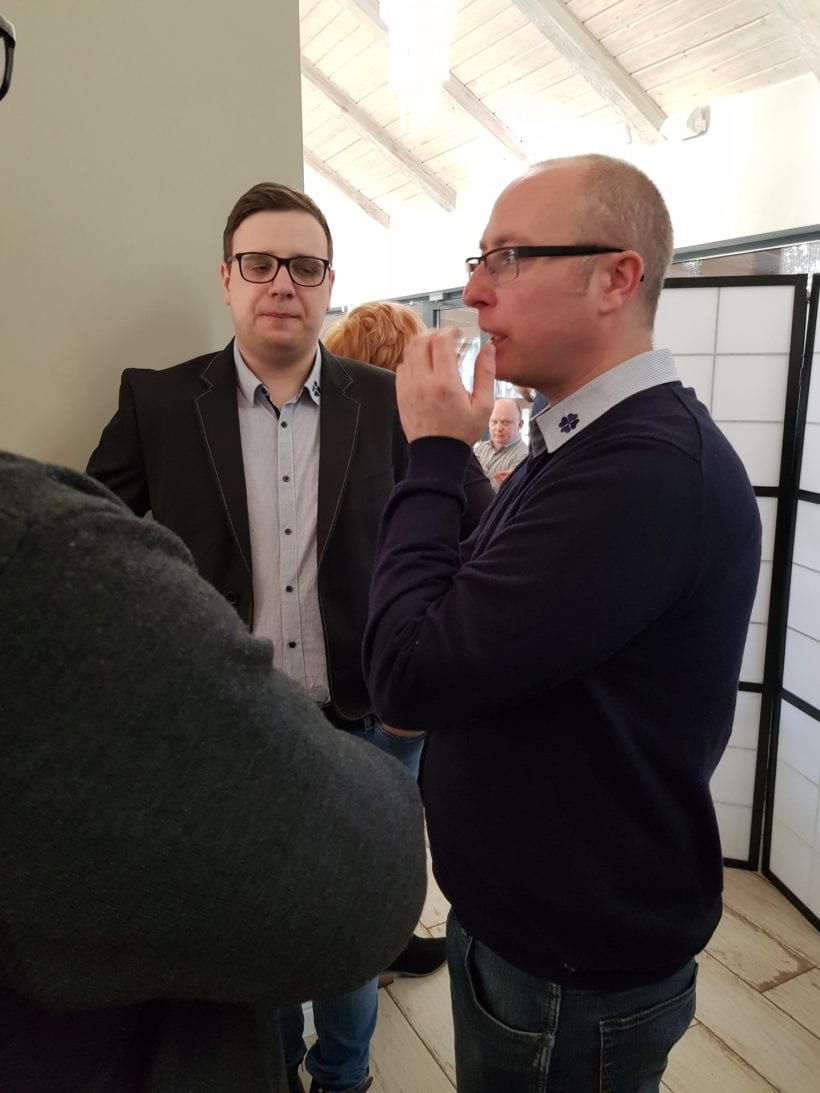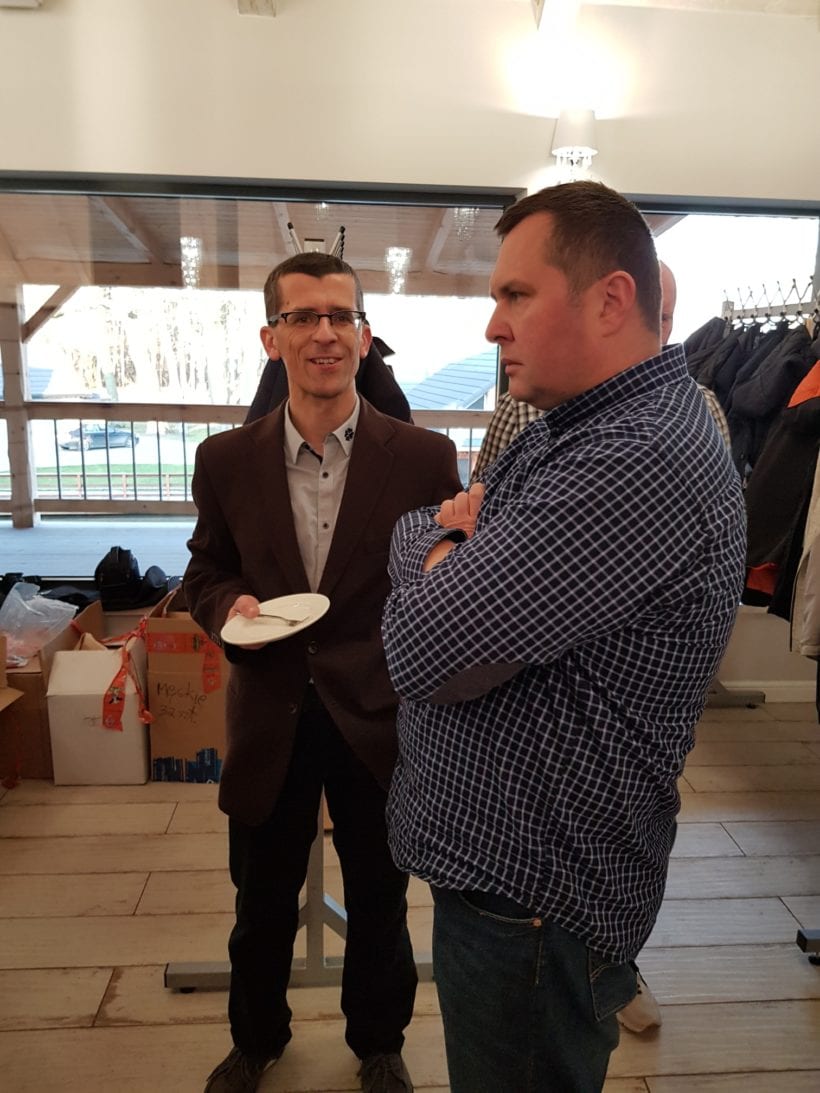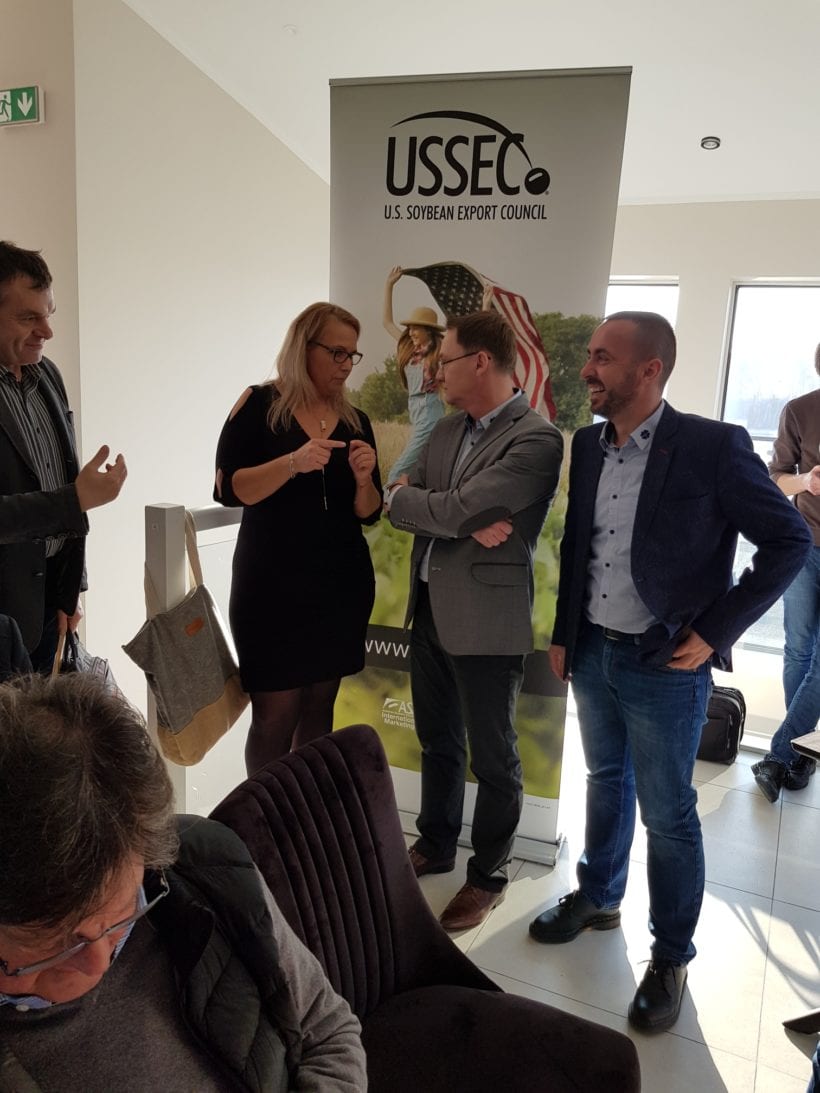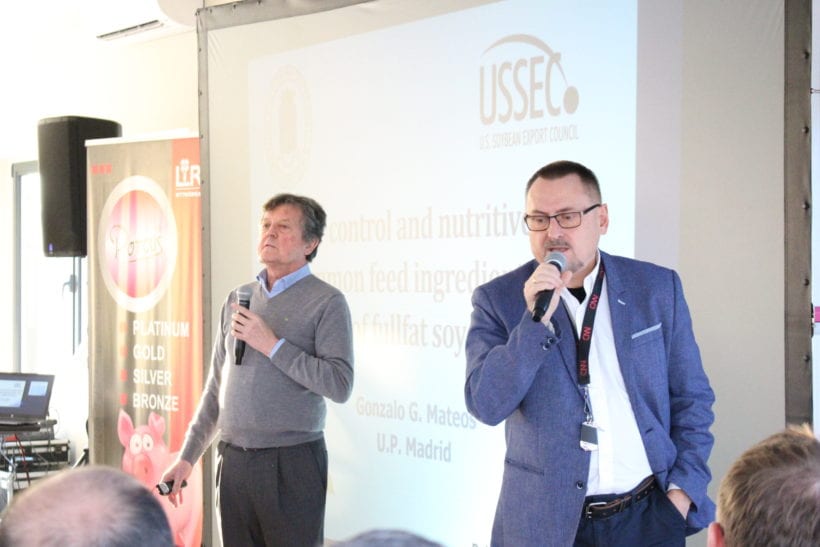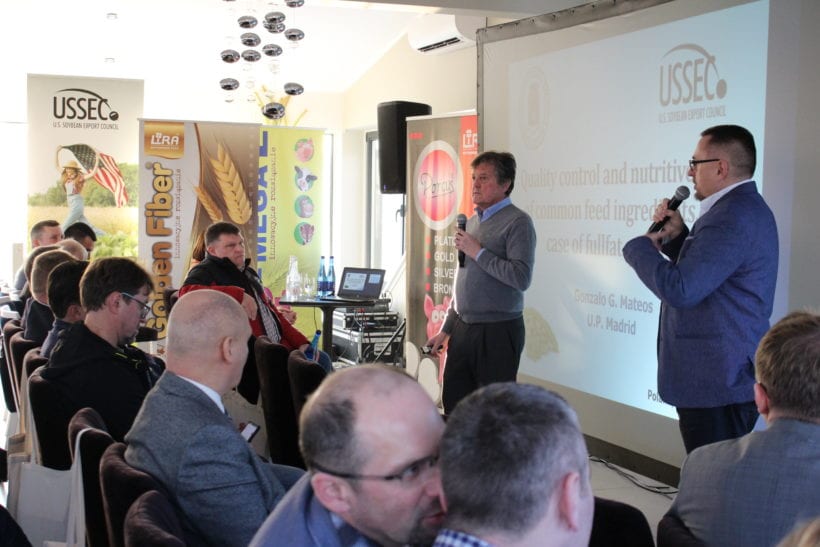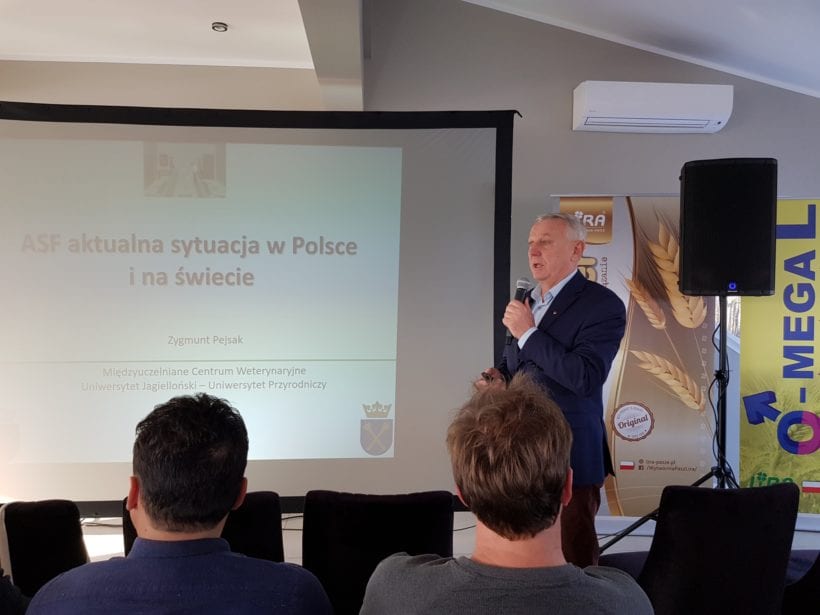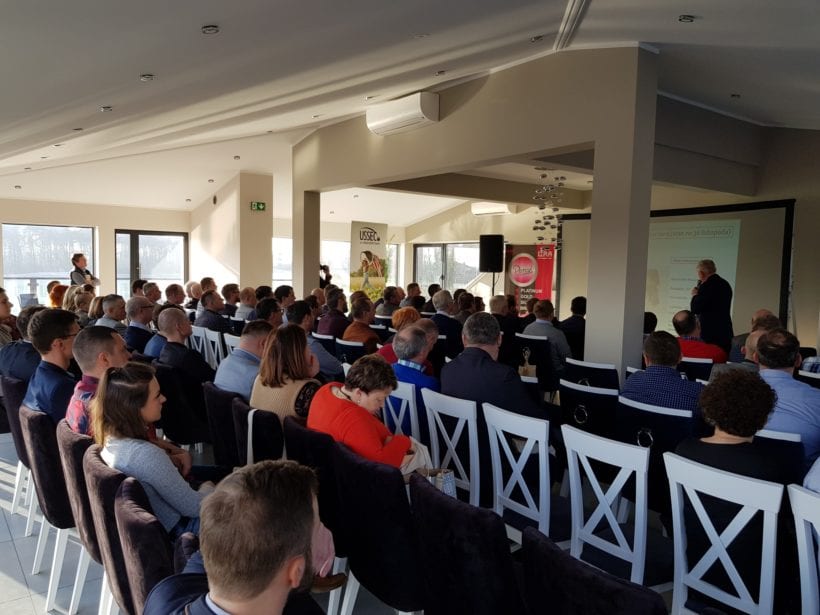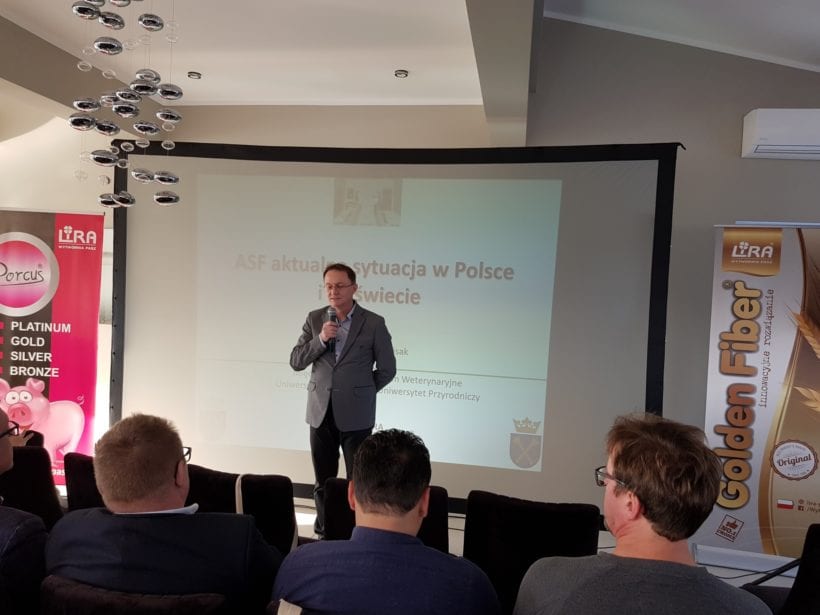Polish Swine Growers Learn About Benefits of Extruded Soy in Young Pig Diets
- Category:
- Animal Utilization
- General News
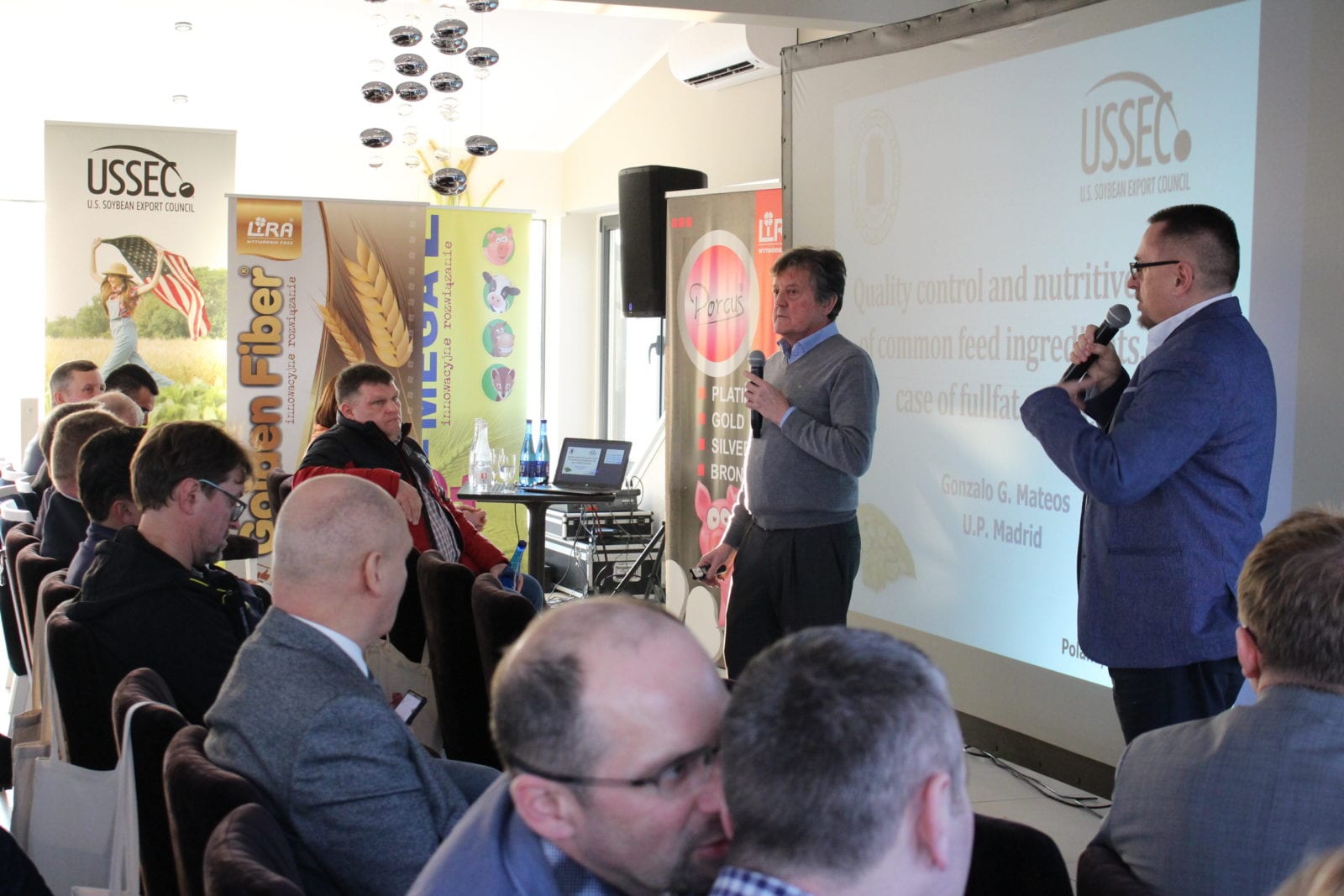
Working with LIRA Feed Company in Poland, USSEC participated in hosting a large swine growers conference. Despite lots of duties at their farms and other businesses, more than 100 farmers came to “Rybakówka” Centre in Żeromin, located in a central province of Łódź to expand their professional knowledge and renew contacts.
The event focused on three main issues: the African Swine Fever (ASF) situation, improvements in nutrition of pigs, and automation of piglet feeding. Professor Zygmunt Pejsak, Professor at the Inter-University Center of Veterinary Medicine, Jagiellonian University – Agricultural University in Kraków, Poland, presented on the current ASF situation in Poland and other countries. He later moved to explaining the importance of strict biosecurity as the best weapon for the fight against the dangerous disease. He gave multiple examples of successful pig farming in the countries and regions where ASF is common where tight biosecurity procedures were kept. One of them was Smithfield’s swine operations in ASF-positive Romania.
Speaking on behalf of U.S. Soy, Professor Gonzalo G. Mateos, Polytechnical University of Madrid (UPM) in Spain, an international expert in livestock nutrition and soybean nutritional value, introduced the pig growers, feed manufacturers, and field nutrition advisors present in the room to the process of extrusion of soybeans, other legumes, and grains. He explained the many benefits of feeding properly extruded soybeans to piglets and growing pigs and stressed the importance of professional quality control by the extrusion operator and by the product users. In his communication with the Polish audience, Dr. Mateos was helped by Jerzy W. Kosieradzki, USSEC Technical Director North-East Europe, as the interpreter, who also networked among the industry members.
The professional audience also viewed a film explaining the extrusion process and the positive effects it causes in the beans and the various nutrients as well as how they are utilized in top pig nutritional programs.
Automation of piglet feeding systems presented by WEDA completed the educational program of the event and the participants were offered plenty of time during breaks to discuss the various issues with the speakers and LIRA staff.
